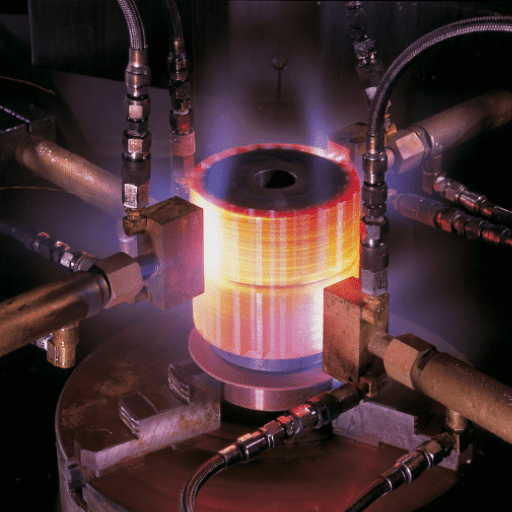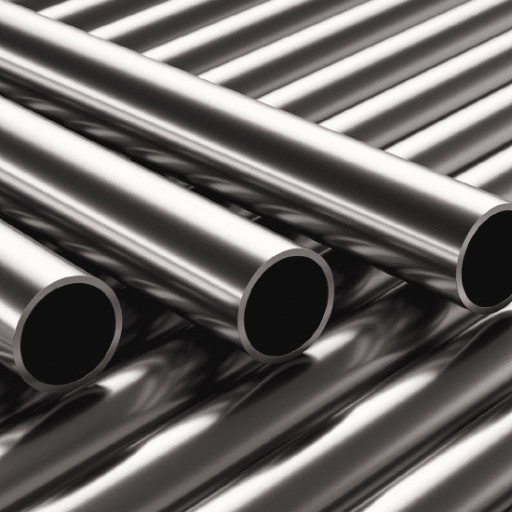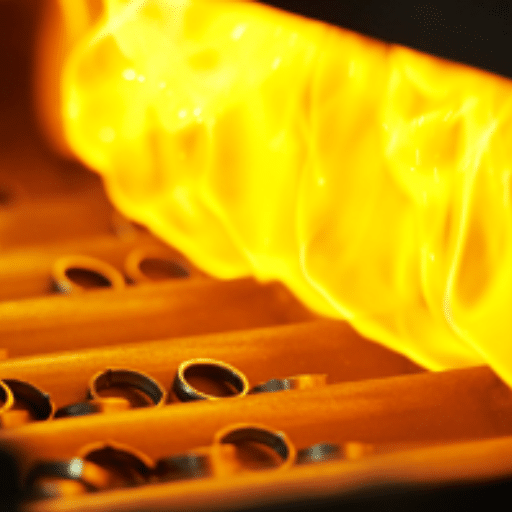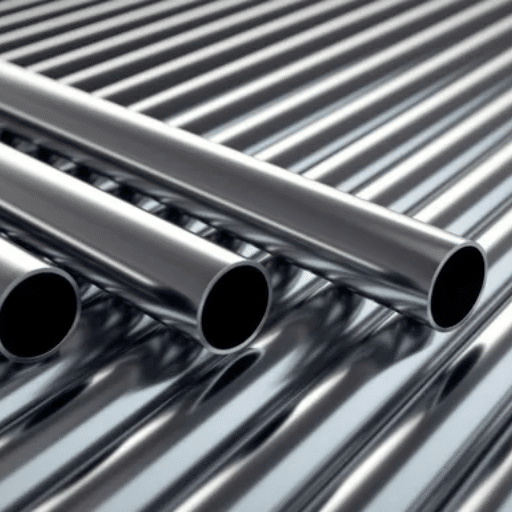Known for its long-lasting nature, resistance to rust, and shiny finish, stainless steel is one of the most flexible materials used in today’s industries. Nevertheless, there are differences between stainless steels. The two most commonly used categories—austenitic and martensitic stainless steels—have unique characteristics and benefits that are suitable for diverse applications. It does not matter if you are making kitchen appliances, structural parts, or precision tools; knowing the differences between these two types is very important for making the right decisions. At the center of the debate between austenitic and martensitic stainless steels, this blog post looks at their primary properties, compares their composition, mechanical attributes, and typical applications.
Introduction to Stainless Steels
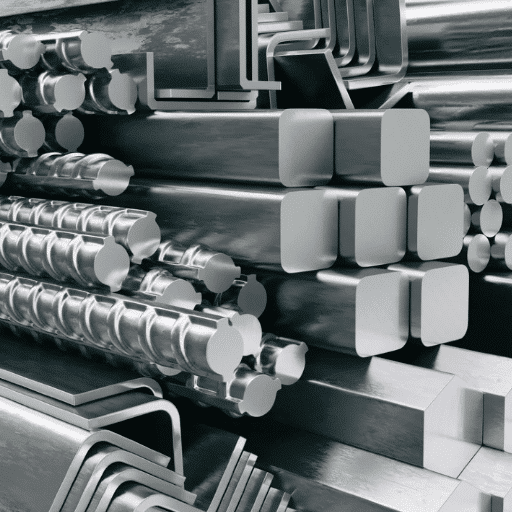
Stainless steel is an all-purpose, very strong, and durable material that consists mainly of iron, carbon, and a minimum of 10.5% chromium. The main feature of stainless steel is its remarkable corrosion resistance which is due to the formation of a protective oxide layer over the metal. Aside from being strong and long-lasting, it also has temperature resistance making it suitable for use in various sectors. Different stainless steel types, like austenitic, martensitic, ferritic, and duplex, are usually classified because of their distinct characteristics, and each is appropriate for its particular application.
What are Stainless Steels?
Stainless steels are a group of iron-based alloys known for their exceptional corrosion resistance, achieved through the addition of chromium, typically at least 10.5% by weight. Chromium reacts with oxygen in the environment to form a thin, stable oxide layer, often referred to as the “passive layer,” which protects the metal from further corrosion. Modern stainless steels may also incorporate other elements such as nickel, molybdenum, titanium, or nitrogen to enhance their properties, including mechanical strength, resistance to extreme temperatures, and improve formability.
🔬 Stainless Steel Categories
Austenitic Stainless Steels
The most common, favored for their excellent corrosion resistance and weldability, making them ideal for applications in food processing, healthcare, and construction.
Ferritic Stainless Steels
Magnetic and offer good resistance to stress corrosion cracking, often used in automotive components and industrial machinery.
Martensitic Stainless Steels
Known for their hardness and strength, typically used for knives and cutting tools.
Duplex Stainless Steels
Combine features of both austenitic and ferritic grades, offering superior strength and resistance to chloride-induced stress corrosion cracking, making them suitable for chemical processing and marine applications.
Overall, stainless steels are a critical material for modern industry, combining durability, resistance to rust, and low maintenance needs, ensuring their place in applications that require reliability and long-lasting performance.
Overview of Steel Grades
Steel grades are grouped into different categories according to their chemical makeup, physical, and mechanical properties, as well as their application. This system of classification serves to make it easier for both engineers and manufacturers to decide on the best material for a particular purpose, thus guaranteeing performance and cost-effectiveness of their choice.
1. Carbon Steel
Carbon steel consists mainly of iron and carbon, together with a fluctuating amount of other elements such as manganese, silicon, and sulfur. It is further divided, according to carbon content, into three types:
- Low Carbon Steel (Mild Steel): Comprising up to 0.3% carbon. Characterized by ductility, weldability, and low price, widely used in construction and automotive sectors.
- Medium Carbon Steel: Comprising 0.3-0.6% carbon. Provides good strength and ductility proportions; used for gears, axles, and machinery components.
- High Carbon Steel: Comprising more than 0.6% carbon. Extremely hard and wear resistant; used in cutting tools and high-strength wires.
2. Alloy Steel
The addition of elements like chromium, nickel, molybdenum, and vanadium makes alloy steels contended. These elements increase mechanical properties and corrosion resistance.
- Chromium-Molybdenum (Cr-Mo) Steel: Main application in power generation and petrochemical industries due to high temperature and pressure resistance.
- Nickel Alloys: Noted for toughness and cryogenic properties, used in space and cryogenic applications.
3. Stainless Steel
Stainless steel resists corrosion due to at least 10.5% chromium content. The diverse types include:
- Austenitic Stainless Steel (300 Series): Non-magnetic with extreme corrosion resistance. Used in food processing, medical devices, and kitchen appliances.
- Ferritic Stainless Steel (400 Series): Magnetic with good corrosion resistance and high-temperature stability; used in automotive exhaust systems.
- Martensitic Stainless Steel: High strength with moderate corrosion resistance; ideal for surgical instruments and turbines.
- Duplex Stainless Steel: Mixture of austenitic and ferritic structures with superior strength and resistance to chloride stress corrosion cracking.
4. Tool Steel
Tool steels are meant for processes requiring hardness, wear resistance, and ability to maintain shape at high temperatures. They contain tungsten, molybdenum, and vanadium, suitable for cutting tools, molds, and dies.
📊 Data Highlights
- In 2022, the global stainless steel market was estimated at around $111.4 billion with a projected CAGR of 6.1% from 2023 to 2030.
- Carbon steel grades account for 90% of total steel production globally due to wide applications and cost-effective manufacturing.
The grades of steel are constantly changing with the times, as new technology and innovation are making it possible to come up with more efficient and sustainable materials that are capable of satisfying the needs of modern industries. Skyscrapers, medical devices, and other applications depend on steel, thus it is still the most critical material in the creation of the modern world.
Importance of Stainless Steel in Industry
Stainless steel is the material with the unique properties that present the main reason why it is used so widely in various industries. Among those properties are resistance to corrosion, durability, and easy fabrication. Taking its versatility into account, the metal is still not to be neglected and its applications are manifold thus supporting both function and efficiency of industrial operations in a whole range of activities.
🏭 Key Industrial Applications
Construction & Architecture
Used in building frameworks, roofing, and cladding for strength and corrosion prevention.
~20% of production
Medical Equipment
Non-reactive and clean nature makes it mandatory for surgical instruments, implants, and hospital equipment, ensuring sterility and durability.
Food & Beverage Industry
Essential for food-grade containers, processing equipment, and kitchenware. Smooth surface prevents microbial growth and enables easy cleaning.
Automotive & Transportation
Used in car parts and exhaust systems, increasing lifespan and wear resistance.
~12% of production
Energy & Power
Significant role in power generation and renewable energy plants for pipelines, turbines, and offshore platforms. Withstands extreme temperatures and pressures.
The lasting significance of stainless steel is its very nature that it can be molded according to the needs of different industries that can then install modern efficiency and sustainability in their operations indirectly.
Austenitic Stainless Steel

The austenitic stainless steel is the one that everyone turns to when it comes to stainless steel, as its great corrosion resistance, ductility, and non-magnetic nature are the main reasons. This type of steel consists mainly of high chromium and nickel contents which contribute to its overall quality and ability to last in extreme environments. The adaptability of austenitic stainless steel allows it to be great for applications such as kitchenware or heavy industrial machines.
✨ Austenitic Stainless Steel Characteristics
- Corrosion Resistance
Complete immunity to corrosion in a large variety of environments, even under acidic and alkaline conditions.
- High Strength and Ductility
Keeps high mechanical strength and flexibility, even in cryogenic temperatures.
- Non-Magnetic Properties
Typically non-magnetic, but some variations may be slightly magnetic if cold worked.
- Ease of Fabrication
Easily welded, machined, and formed into various shapes and structures.
- Temperature Resistance
Excellent performance at both high and low temperatures, suitable for demanding applications.
These attributes raise austenitic stainless steel’s profile among the industries of construction, transportation, food processing, and medical device manufacturing, to name a few. The most common grades are 304, 316, and their respective variations, which are customized to the specific needs of the applications.
Properties of Austenitic Stainless Steel
Corrosion Resistance
The corrosion resistance of austenitic stainless steels is outstanding and they are especially favored in environments that have acids and are rich in chlorides. As an example, grade 316 will be more resistant to pitting and crevice corrosion, thanks to its molybdenum content.
High Ductility
The ductility of these steels is very good and they can be easily formed and shaped into different products without losing their strength.
Non-Magnetic Behavior
In general, austenitic stainless steels do not exhibit magnetic properties when in the annealed state and hence they can be used in applications where there is a need to avoid magnetic interference.
Excellent Toughness
This character has its toughness pretty near to that of a super material, so it is the same at cryogenic as well as elevated temperature, thus, it can withstand the most severe conditions like refrigerating or heating up industrial equipment.
Good Weldability
Austenitic grades like 304 and 316 are very much weldable by the use of conventional welding techniques which makes it possible to have a flawless production of complex structures or assemblies.
Common Grades: 304 and 316
Grade 304
Grade 304 is the most widely utilized stainless steel due to its excellent corrosion resistance, affordability, and adaptability. It contains around 18-20% chromium and 8-10.5% nickel, contributing to its robust anti-corrosion properties. This grade can resist oxidizing agents and most acids, making it suitable for a variety of applications.
Key Features of 304 Stainless Steel:
- Corrosion Resistance: Suitable for general environments, including kitchen equipment, food processing, and chemical containers.
- Temperature Performance: Can withstand temperatures up to 870°C (1598°F) in continuous service.
- Mechanical Properties: Ultimate tensile strength of approximately 505 MPa and yield strength around 215 MPa.
- Applications: Commonly used in sinks, railings, industrial piping, and automotive parts.
Grade 316
Grade 316 stainless steel provides enhanced corrosion resistance, particularly against chloride environments such as saltwater or de-icing salts. This is due to the addition of 2-3% molybdenum, which improves its pitting and crevice corrosion resistance.
Key Features of 316 Stainless Steel:
- Superior Corrosion Resistance: Ideal for marine environments and exposure to harsh chemicals.
- Improved Strength at High Temperatures: Performs well in temperatures up to 800°C (1472°F).
- Mechanical Properties: Tensile strength of approximately 515 MPa and yield strength around 290 MPa.
- Applications: Frequently used in marine hardware, medical implants, chemical processing equipment, and pharmaceutical industries.
Comparison of 304 vs. 316
| Property | Grade 304 | Grade 316 |
|---|---|---|
| Nickel Content | 8-10.5% | 10-14% |
| Molybdenum Content | None | 2-3% |
| Corrosion Resistance | Good in general environments | Excellent in chloride environments |
| Cost | More affordable than 316 | More expensive |
| Applications | General-purpose, household, and industrial | Marine, medical, and high-exposure environments |
Both grades 304 and 316 showcase the versatility of austenitic stainless steels and are essential materials in diverse industries. The choice between the two often depends on the specific environmental and application requirements.
Corrosion Resistance of Austenitic Steel
Austenitic stainless steels got their name because of the excellent corrosion resistance, a property that is very much appreciated in many industries. Their corrosion resistance is characterized by five main points listed below with illustrations:
- General Corrosion Resistance
Austenitic stainless steels, particularly grades 304 and 316, are very resistant to general corrosion in a wide variety of atmospheric and water-based situations, thus they can be used in both industrial and household applications without any problems.
- Pitting and Crevice Corrosion Resistance
Molybdenum enriched 316-grade, for example, has a pitting and crevice corrosion resistance that is significantly better in chloride-dominant areas, such as the ocean and its neighboring lands than other grades.
- Intergranular Corrosion Resistance
Low carbon variants like 304L and 316L are the most resistant materials in terms of intergranular corrosion even when subjected to welding and high-temperature environments.
- Stress Corrosion Cracking Resistance
Austenitic steels are great at resisting stress corrosion cracking, even in mild to moderately high-temperature applications. However, they become vulnerable under certain extreme conditions of high stress and corrosive environment.
- Chemical Corrosion Resistance
These steels have excellent resistance to chemical attacks, including acids, alkalis, and chlorides, thus they can be reliable even in harsh industrial and processing environments.
These factors portray austenitic stainless steels as not only durable but also resistance materials to the most challenging conditions, hence still being the material of choice in some industries.
Martensitic Stainless Steel

Martensitic stainless steels are a class of stainless steels with the highest strength and hardness among the group, with a corresponding degree of corrosion resistance. Their defining feature is the possibility of heat treatment which leads to drastic changes of the mechanical properties. They are preferred in spheres where wear resistance, toughness, and edge retention are the key factors.
⚙️ Main Traits of Martensitic Stainless Steel
- High Strength and Hardness
The tensile strength and hardness of martensitic stainless steels can be increased to very high levels through heat treatment which makes their use in the production of cutting tools and industrial knives very common.
- Moderate Corrosion Resistance
Martensitic steels are not as resistant to corrosion as their austenitic counterparts, but they are sufficient protection against rust and oxidation in less aggressive conditions.
- Heat Treatability
The hardening and tempering of these steels are easy which gives them flexibility to meet the specific mechanical requirements based on the application.
- Good Wear Resistance
The high hardness of martensitic stainless steels allows them to perform exceptionally well in the environments where resistance to wear and abrasion is of major concern.
- Magnetism
Martensitic stainless steels are magnetic, in contrast to austenitic grades, which makes them appropriate for applications where magnetic properties are important.
It is the aerospace, medical, automotive, and general manufacturing industries that still rely on martensitic stainless steels for their toughest applications, which is a trade-off between performance and durability.
Properties of Martensitic Stainless Steel
The martensitic stainless steels are the ones that are mainly distinguished by their special properties, which together form an excellent collection and make them quite universally applicable for industrial uses. The 5 major properties of martensitic stainless steels are below each one with details provided:
High Strength and Hardness
Martensitic stainless steels are known for their strength and hardness, which are mainly due to their distinct crystalline structure. The quality of heat treatment also contributes to these properties and the steels become very good for wear resistant and durable applications.
Typical Hardness: Up to 58 HRC after heat treatment.
Good Wear and Abrasion Resistance
The high hardness of martensitic stainless steels leads to their superior wear and abrasion resistance, therefore making the use of these grades in tools, knives, and cutting instruments justifiable.
Application Example: Industrial blades and bearings.
Corrosion Resistance
Martensitic grades are not as resistant as austenitic stainless steels; however, they still offer a fair amount of corrosion resistance, especially in less moisture or chemicals environments.
Key Grades: 410, 420, and 440C.
Heat Treatability
The martensitic stainless steels can be hardened by the use of heat treatment processes like quenching and tempering, thus enabling the customization of the mechanical properties.
Heat Treatment Range: 950°C to 1065°C (1730°F to 1950°F) for quenching.
Magnetic Properties
Martensitic stainless steels have the property of being magnetic, unlike austenitic steels, which adds the capability in use where magnetic behavior is required.
Comparison: Stronger magnetic properties compared to other stainless steel types.
The above-mentioned properties describe the reasons for the versatility of martensitic stainless steels, which, through their reliable nature, can serve demanding applications across different industrial sectors.
Common Grades: 410 and Others
Martensitic stainless steels are presented in several grades, which are different from one another by their properties like hardness, strength, and corrosion resistance that are suitability for different applications. The following five grades with their specifications are the most common ones:
Grade 410
Applications: Cutlery, fasteners, and pump parts.
Features: High strength after heat treatment and excellent corrosion resistance.
Grade 416
Applications: Shafts, gears, and valve components.
Features: Sulfur added to enhance machinability.
Grade 420
Applications: Surgical instruments, knives, and shear blades.
Features: High hardness and moderate corrosion resistance.
Grade 431
Applications: Aerospace and marine industries.
Features: Better toughness and corrosion resistance compared to Grade 410.
Grade 440C
Applications: Bearings, tools, and high-wear parts.
Features: Excellent wear resistance and hardness with moderate corrosion resistance.
The unique advantages of these grades are tailored for the industries that need specific mechanical or corrosion-resistant properties.
Hardness and Heat Treatment of Martensitic Steel
Martensitic stainless steel employs a series of heat treatment processes to develop its strength and hardness characteristics. The hardening of these steels is done by the quenching process and then tempered to distribute their mechanical properties according to the requirements of the specific application. Heat treatment not only processes applying more hardness but also through the toughness optimization, wear resistance and corrosion tolerance are also being improved.
🔥 Key Heat Treatment Processes for Martensitic Steel
1. Annealing
- Internal stresses are relieved and the microstructure is refined by this process.
- Temperature Range: 815°C – 900°C (1500°F – 1650°F)
- Hardness is reduced and machinability is enhanced.
2. Quenching
- The rapid process of cooling from the austenitizing temperature to the martensite formation.
- The most common quenching mediums are oil and air depending on the steel grade.
- High hardness is produced at the cost of ductility.
3. Tempering
- The process of tempering is done after quenching to relieve stresses and improve toughness.
- Temperature Range: 205°C – 650°C (400°F – 1200°F)
- The process determines the extent of hardness and toughness.
4. Stress Relieving
- Machining or welding is carried out post- and to this process of reducing residual stresses.
- Temperature Range: 540°C – 650°C (1000°F – 1200°F)
5. Cryogenic Treatment
- Some grades receive this treatment to boost wear resistance and dimensional stability.
- Steel is subjected to temperatures as low as -185°C (-300°F).
All these steps are very important in modifying the properties of martensitic stainless steel to the point where it is suitable for the specific application. Maximum hardness and performance are solely determined by the accurate control of heat treatment parameters.
Key Differences Between Austenitic and Martensitic Stainless Steel. Chemical Composition:
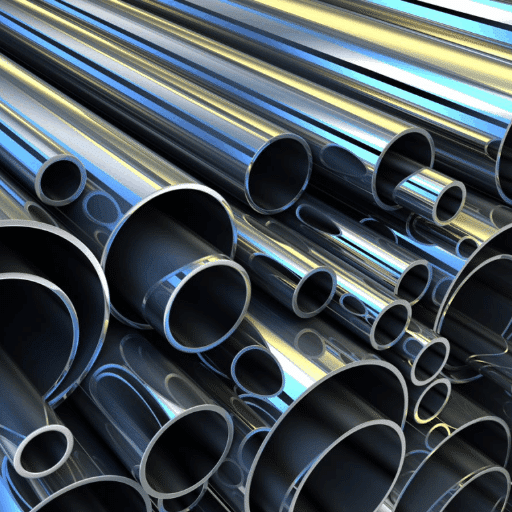
Austenitic stainless steel contains a higher percentage of chromium and nickel, while martensitic stainless steel has a higher concentration of carbon.
2. Corrosion Resistance:
Due to the higher amount of chromium and nickel, austenitic stainless steel offers better corrosion resistance than martensitic stainless steel.
3. Heat Treatment:
Austenitic stainless steel does not require heat treatment for strength and hardness, while martensitic stainless steel needs precise heat treatment to achieve desired properties.
4. Ductility:
Austenitic stainless steel is more ductile compared to martensitic stainless steel, meaning it can withstand greater deformation without breaking.
5. Weldability:
Austenitic stainless steel is easier to
Austenitic stainless steel is highly corrosion-resistant, ductile, and non-magnetic, while martensitic stainless steel is hard, wear-resistant, and magnetic.
| Key Point | Austenitic | Martensitic |
|---|---|---|
| Corrosion Resistance | High | Moderate |
| Ductility | High | Low |
| Hardness | Low | High |
| Magnetism | Non-magnetic | Magnetic |
| Heat Treatment | Not hardenable | Hardenable |
| Applications | Food, chemical, marine | Tools, blades, turbines |
Microstructure Differences
The differences in microstructure that exist between austenitic and martensitic stainless steels have a large impact on their properties and applications. The following is a comprehensive enumeration of five significant microstructure differences:
- Crystalline Structure
- Austenitic: Possesses a face-centered cubic (FCC) crystal structure characterized by high ductility and non-magnetic properties.
- Martensitic: Contains a body-centered tetragonal (BCT) structure which is a result of the transformation of austenite by rapid cooling and leads to increased hardness and brittleness.
- Phase Stability
- Austenitic: Goes through a long temperature range without phase changes and thus has uniform mechanical properties.
- Martensitic: Changes the phase with temperature and cooling rate and thus affects hardness and toughness.
- Grain Size
- Austenitic: Usually the case that grains are finer because of their ability to maintain the ductility factor while being deformed.
- Martensitic: The martensitic transformation during quenching results in coarser grain size, therefore higher strength but lower ductility.
- Carbon Content
- Austenitic: Made up of low carbon grades (typically ≤0.08%) that contribute to gaining corrosion resistance.
- Martensitic: Increased carbon content (up to 1.2%) is one of the reasons for its superior hardness and wear resistance.
- Carbide Formation
- Austenitic: The presence of alloying elements such as nickel, in conjunction with low carbon content, limits carbide precipitation, hence, reducing susceptibility to intergranular corrosion.
- Martensitic: The heat treatment process leads to the formation of carbide precipitates, which contribute to the hardness of the steel but also the risk of corrosion resistance reduction.
Mechanical Properties Comparison
Let’s discuss the differences in mechanical properties of austenitic and martensitic stainless steel in the following comparison:
Tensile Strength
Austenitic: 480-690 MPa. Moderate-strength material suitable for many applications.
Martensitic: 900-1200 MPa. Enormously higher due to hardened structure.
Yield Strength
Austenitic: 200-500 MPa. Ideal for flexibility and forming processes.
Martensitic: 500-700 MPa. Greater resistance to deforming under stress.
Hardness
Austenitic: 150-200 HB. Soft material with ductility and pliability.
Martensitic: 200-500+ HB after heat treatment. Very hard material.
Ductility
Austenitic: 40-60% elongation. Very ductile.
Martensitic: 5-20% elongation. Ductility lessened considerably.
Impact Resistance
Austenitic: Very good resistance even at sub-zero temperatures. Excellent for cryogenic applications.
Martensitic: Moderate resistance. More brittle, especially after hardening.
Welding and Fabrication Considerations
When dealing with stainless steels through welding and fabricating, individuals should take into consideration their unique properties and behaviors in order to get the best performance and durability. Here are five crucial factors to consider:
⚠️ Critical Fabrication Factors
- Thermal Expansion: Among all metals, austenitic stainless steel classes have the highest thermal expansion rate. This may result in distortion or warping; proper clamping and pre-weld preparation are necessary.
- Heat-Affected Zone (HAZ): The welding process forms a heat-affected zone causing changes in corrosion resistance and mechanical properties. Heat input control and post-weld treatments minimize HAZ effects.
- Filler Material Selection: Carefully select and match the filler metal with the base metal type to maintain strength, corrosion resistance, and compatibility. For instance, 316-grade filler wire for 316 stainless steel ensures uniformity.
- Pre-Weld and Post-Weld Cleaning: Contaminants such as grease, oil, or surface oxides adversely affect weld quality. Thorough cleansing before welding is mandatory, and post-weld cleaning (pickling or passivation) restores corrosion protection.
- Intergranular Corrosion Prevention: Welding can bring about carbide precipitation causing intergranular corrosion from prolonged exposure to high temperatures. Using low-carbon grades (304L or 316L) or adding stabilizing elements (titanium or niobium) decreases risk.
All these factors will aid in the process of welding and fabrication of stainless steels while at the same time not losing the advantages of the respective material.
Applications of Austenitic and Martensitic Stainless Steel
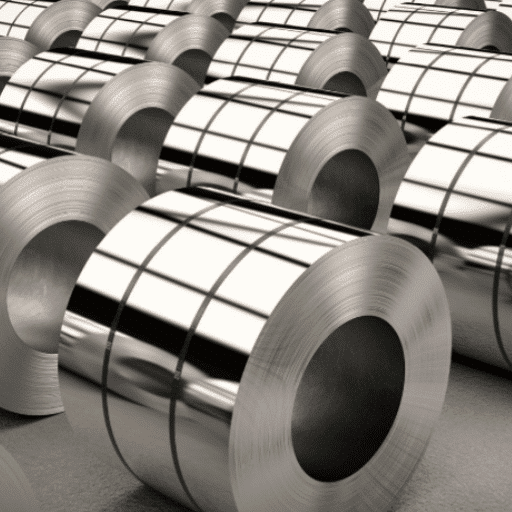
Due to their distinct features and superb performance, austenitic and martensitic stainless steels hold a place of great importance in many sectors. We have prepared a list of five primary applications for each of the two kinds.
Chemicals and Petrochemicals
Grades of austenitic stainless steel (e.g. 304 and 316) are preferred for the design of storage tanks, pipelines, and processing equipment because of their excellent resistance to corrosion in environments containing acids, alkalis, and chlorides.
Medicine
Austenitic stainless steels are indispensable in surgical tools, implants, and hospital beds because of their body friendliness, easy cleaning, and resistance to corrosion in bodily fluids.
Food and Drinks Industry
Food-grade containers, beverage production, and kitchen equipment are the main applications of austenitic grades like 304 because they resist food acids and stop contamination.
Building Applications
The attractiveness and longevity of austenitic stainless steels make them suitable for facades, handrails, and ornaments, even in places where they are subjected to harsh weather.
Power Plant
The application of austenitic steels is in nuclear power plants and renewable energy sources for their superior thermal and corrosion resistance even at very high temperatures.
Martensitic Stainless Steel Applications
Knives and Blades
Martensitic stainless steels (for instance, grades 420 and 440) are common in the manufacturing of knives, scissors, and industrial blades thanks to their high strength and wear resistance.
Aerospace Parts
High mechanical strength and toughness of martensitic steels enable their usage in aircraft components such as shafts, landing gear, and structural parts.
Extraction of Oil and Gas
Martensitic grades are used in pipes, downhole equipment, and valves where high strength and moderate resistance to corrosion are required.
Surgical Instruments
Some martensitic steels are being used in the production of precision surgical instruments that need both hardness and sharp edges, like scalpels and dental tools.
Car Parts
Martensitic stainless steels are used in parts like axles, engines, and exhausts where high wear resistance and long life are the main requirements.
These industries certify the wide range of applications and the trustworthiness of austenitic and martensitic stainless steels.
Industries Using Austenitic Stainless Steel
Food and Beverage Industry
Austenitic stainless steel has outstanding characteristics, such as resistance to corrosion and hygienic surfaces for cleaning, which makes the food and beverage industry its main application area. Besides, it is frequently used in the food processing industry and piping systems’ storage tanks and equipment. This material is very effective at making environments clean as it avoids the proliferation of bacteria and hence contamination.
Chemical Processing Industry
Austenitic stainless steel goes through continuous renewal at different levels in the food and beverage industry and is readily accepted in chemical processing plants due to its excellent reputation of acids, alkalis, and harsh chemicals. The compound is also used in reactors, heat exchangers, and pressure vessels.
Construction Sector
The construction industry has significantly increased its demand for austenitic stainless steels, which are to be used for structural elements such as cladding, roofing, and railings. Moreover, its long-lasting quality and visual attractiveness make it a perfect match for architectural applications, particularly in the case of modern and eco-friendly building designs.
Medical and Pharmaceutical Industry
They are used in surgical instruments, implants, and pharmaceutical processing equipment.
Oil and Gas Industry
The oil and gas industry uses austenitic stainless steel pipelines, offshore platforms, and processing plant, where the most extreme environments like high temperatures, high pressure, and corrosive substances are usually present. Its performance guarantees safety and durability even in the harshest conditions.
Industries Utilizing Martensitic Stainless Steel
Cutlery and Kitchenware Industry
Martensitic stainless steel is extensively applied in the production of knives, scissors, and other cutting tools. Its significant hardness and terrific edge retention make it the best choice for cutting with precision and for the most demanding applications requiring durability.
Aerospace Industry
The above-mentioned stainless steel type is routinely employed in the aviation industry because of its uncommon strength and a remarkable level of resistance to wear. The coming of such components as landing gear parts and substantial structural ones that undergo high mechanical stress is what one usually expects when speaking about the usage of stainless steel in the aerospace sector.
Medical and Dental Equipment
Surgical instruments, dental tools, and orthopedic devices are all examples of martensitic stainless steel. Its ability to undergo sterilization procedure without losing sharpness and its property of maintaining strength during processing make it a very important material in healthcare.
Automotive Industry
Martensitic stainless steel is being utilized for the production of engine parts, shafts, and other critical automotive components that ensure the reliability of such parts and their resistance to wear and corrosion in high-stress environments.
Energy Sector
This form of steel is applied in the power generation and nuclear industries, where turbine blades and boiler parts need to be made of a material that combines high tensile strength and resistance to thermal fatigue.
Choosing the Right Type for Applications
The selection of the appropriate martensitic stainless steel type for a particular application is usually determined by the environment and the component’s specific requirements. Stainless steel grades crafted for heavy use, such as those found in the automotive or energy sectors, are the ones I opt for if high strength and wear resistance are of utmost importance. In cases where corrosion resistance is highly critical, I make sure the steel complies with the required standards for the specific operating conditions. The interplay of factors such as tensile strength, thermal resistance, and durability leads to my making a well-informed choice that fits the intended purpose.
References
- Deformation-Induced Martensite in Austenitic Stainless Steels: A Review
This review explores the transformation between austenite and martensite, focusing on temperature and chemical driving forces.
Link to source - Martensitic Transformation in Austenitic Stainless Steels
This study examines the morphology and crystallography of martensitic transformations in austenitic stainless steels.
Link to source - Comparison of Methods for Measuring Strain-Induced α-Martensite Content
This paper compares techniques for measuring martensite content in austenitic steels.
Link to source
Frequently Asked Questions (FAQ)
What is the difference between austenitic and martensitic stainless steels?
The key difference between austenitic and martensitic stainless steels lies in their crystal structures. Austenitic stainless steels, such as 304 and 316 grades, have a face-centered cubic structure, providing excellent ductility and corrosion resistance. In contrast, martensitic stainless steels exhibit a body-centered cubic structure, which allows for higher hardness and tensile strength but generally lower ductility and corrosion resistance.
How does heat treatment affect martensitic stainless steel?
Heat treatment is crucial for martensitic stainless steel as it can be hardened through quenching and tempering processes. This procedure transforms the microstructure from austenite to martensite, significantly increasing the hardness and strength of the material. Proper heat treatment enhances the wear resistance, making martensitic stainless steel suitable for applications requiring high strength and hardness.
What are the mechanical properties of austenitic vs martensitic stainless steels?
Austenitic stainless steels typically have high ductility, good formability, and excellent corrosion resistance, making them suitable for food processing and surgical instruments. Martensitic stainless steels, on the other hand, display higher strength and hardness, often used in applications like cutting tools and blades, but they can be more brittle and less resistant to corrosion compared to their austenitic counterparts.
Can austenitic stainless steel be welded?
Yes, austenitic stainless steel is known for its good weldability. When welding austenitic stainless steels, techniques such as TIG and MIG welding are commonly used. The presence of chromium and nickel in their chemical composition aids in maintaining corrosion resistance even after welding.
What is the significance of chromium and nickel in austenitic stainless steels?
Chromium and nickel play a vital role in the chemical composition of austenitic stainless steels, contributing to their excellent corrosion resistance and non-magnetic properties. Chromium provides a protective oxide layer, while nickel enhances the toughness and ductility of the alloy, making it suitable for various demanding applications.
How do the corrosion resistance properties compare between austenitic and martensitic grades?
Austenitic stainless steels generally offer superior corrosion resistance compared to martensitic grades. Their higher chromium and nickel content allows them to withstand various corrosive environments, making them ideal for chemical processing and marine applications. Martensitic stainless steels, while still resistant to some degree, are more susceptible to corrosion, especially in chloride-containing environments.
What are the common applications for martensitic stainless steel?
Martensitic stainless steel is often used in applications requiring high strength and wear resistance, such as in manufacturing knives, surgical instruments, and certain automotive components. Its ability to be hardened by heat treatment makes it suitable for tools and parts that endure significant wear and stress.
What are the advantages of using ferritic stainless steel over austenitic and martensitic types?
Ferritic stainless steel offers advantages such as lower cost and good formability while still providing decent corrosion resistance. It is less prone to stress corrosion cracking compared to austenitic grades and can be more suitable for certain applications where magnetic properties are required. However, it lacks the high strength and hardness found in martensitic grades.

